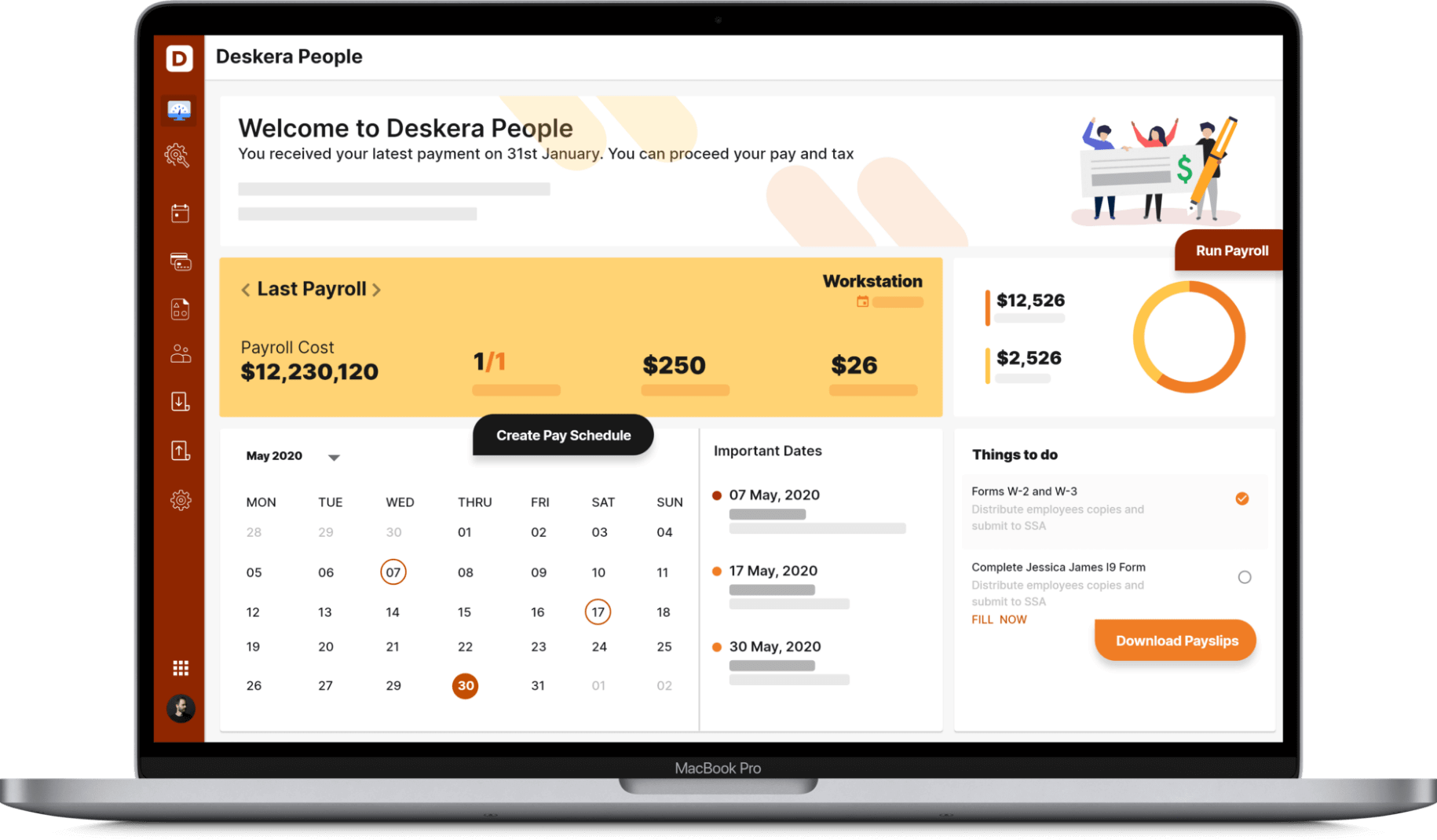Out of a total 100% full-time employees, 43.6% were women, and 56.4% were men. In contrast, in the case of part-time employees, 63% were women, and 37% were men.
These are the most recent statistics of the US Department of Labor showing the trends of part-time and full-time employees in the USA in regards to their gender.
These statistics are important because they highlight how the decision between being part-time employment and full-time employment is largely determined by your gender, age group, ethnicity, and then by the economic conditions.

In fact, by understanding the difference between part-time and full-time employment and employees,
- If you are an employer, then you would be able to decide which type of employment you want to offer to the interested and eligible candidates.
- If you are an employee, then you would be able to decide which type of employment you want to get engaged in.
As an employer, you can even have a mixture of both types of employment, as each comes with its own benefits and added responsibilities, which is why, whether you are an employee or an employer, understanding the difference between part-time and full-time employees is important.
For example, in several companies, health benefits are given to only the full-time employees and not to the part-time employees. While this is a plus point of full-time employment, it is an added cost associated with full-time employees. There are several such factors and benefits that you need to understand before making your decision.
This article will give you a complete insight into part-time and full-time employment and employees and the differences between them by covering the following topics:
- Basic Understanding and Definition of Full-Time Employees
- Salaried and Hourly/Exempt and Non-Exempt
- What are Full-Time Equivalents?
- Basic Understanding and Definition of Part-Time Employees
- Differences Between Part-Time and Full-Time Employees
- Tabular Differences Between Part-Time and Full-Time Employees
- Why Does the Classification Between Part-Time and Full-Time Employees Matter?
- Pros and Cons of Having a Full-Time Employee
- Pros and Cons of Having a Part-Time Employee
- Pros and Cons for a Full-Time Employee
- Pros and Cons for a Part-Time Employee
- How Can Deskera Help You?
Basic Understanding and Definition of Full-Time Employees
While there is no fixed definition of full-time employees, most companies require full-time employees to work between 32 to 40 hours on a weekly basis. While earlier this number was 40 hours, there are several local and federal laws that have reduced the number of working hours to be considered as a full-time employee.
For instance, the Bureau of Labor Statistics defines full-time as 35 or more working hours per week, but this is not a law and is just for statistical purposes. In the case of the Fair Labor Standards Act (FLSA), which is the major employment law of the USA, it has not mentioned any specific requirements for full-time employees and has left that matter entirely in the hands of the employers.
However, FLSA does say that “whether an employee is considered full-time or part-time, does not change the application of the FLSA.” This means that the employees are liable to follow the provisions of FLSA for part-time and full-time employees. These provisions are in regards to minimum wages, record-keeping, overtime, and child labor.
In the case of the Affordable Care Act, it defines full-time employees as those that are working weekly 30 hours on an average. This is defined for the purposes of defining larger employees that an employer has to make required payments to.
The IRS looks to the Affordable Care Act provisions and the responsibility of larger employers (ALE) to make payments if they do not offer health coverage. In order to calculate which employers would have to make these payments and therefore which employees would receive them, full-time equivalents are calculated based on identifying full-time employees. For this purpose, a full-time employee is an employee employed on average at least 30 hours a week or 130 hours a month.
Salaried and Hourly/Exempt and Non-Exempt
What needs to be noted here is that how an employee gets paid does not change on the basis of how their working hours are set. Thus, a salaried employee will continue being paid an annual salary, whereas an hourly employee will continue being paid a specific rate per hour worked.
Often, the salaried employee tends to be full-time employees and are either managers or professionals. However, if a salaried employee is in a job-sharing situation, then they could also be part-time employees.
Further on, some of the employees might even be exempted from overtime because of the type of work that they do or the position that they are in. Usually, such exempted employees are salaried and full-time employees.
What are Full-Time Equivalents?
For counting purposes, the Affordable Care Act requires employers to calculate their full-time equivalents. In this process, full-time employees are those that work for 30 hours each week, and then the percentage of time worked by each part-time employee is calculated in comparison to the time worked by each full-time employee.
A business that has 50 or more than 50 full-time equivalents will face a penalty if their full-time employees are not given an employer-paid health plan. However, if a business has less than 50 full-time equivalents and is providing a health care plan for the employees, then they would be given tax credits.
Basic Understanding and Definition of Part-Time Employees
A part-time employee is someone who works for fewer hours than a full-time employee. Thus, you can designate particular types of employees and particular types of jobs to part-time. Your part-time employees can be paid on an hourly basis, with different hourly rates for different types of work.
For example, in your organization, all your employees associated with clerical work might be working full-time, and all those associated with labor might be working part-time.
Usually, a part-time employee works for as low as 5-10 hours per week, with the highest hours being 35 hours per week. A part-time employee is not guaranteed a specific number of hours or shifts each week like a full-time employee is guaranteed.
For instance, you have a grocery store and a part-time cashier. In one week, he works for only 15 hours, whereas in another week, he works for 20 hours in order to cover for a coworker who has called in sick, or because it is an especially busy time of the year with lots of work to be done.
Differences Between Part-Time and Full-Time Employees
The core factors based on which part-time and full-time employees differ from each other are:
Schedule
A part-time employee’s schedule tends to be flexible, allowing them to work for 3 hours or so on some days and for 8 hours or so on the other days. Basically, they can decide their own working schedule, which does leave them more relaxed and capable of managing their workplace stress.
In addition to this, they can even opt for the timings of their work schedule, wherein night shifts tend to be more common for high production businesses. This flexibility in their work schedule is especially beneficial to those part-time employees who are either studying or are working multiple jobs or both.
In contrast, full-time employees’ schedule is fixed and inflexible as they have to work for a long and fixed number of hours. Usually, a full-time employee has to work from Monday to Friday from 8:30 am to 5:30 pm or for a similar number of hours and days. A full-time employee hence has more working hours in their jobs.
Working Hours
Usually, the weekly working hours of a part-time employee tend to be below 32 hours. Usually, a part-time employee finds himself or herself working these 32 hours when there is a high demand for workforce based on high demand for an organization’s goods and services.
Hence, when there is less work to be done, they can be working for as less as 15 hours a week. A part-time employee’s working hours tend to be lower while also being dependent on the demand for the organization’s products or services that he or she is working for.
In contrast, the total number of weekly working hours for a full-time employee is between 32 to 40 hours, with 32 hours being the bare minimum. This also highlights how the amount of manpower demanded from a full-time employee is much higher than that demanded from a part-time employee.
In fact, when there is an increase in work, a full-time employee starts working overtime as well as on the weekends. Usually, any hour worked for over and above the weekly 40 hours is considered as overtime and needs to be compensated for by the employer. A full-time employee needs to be available to do his or her job throughout the week.
Income
The income earned by a part-time employee can be less, equal, or even more than a full-time employee. This is because the net income earned depends on the work that an employee does for the given organization. This means that if you provide services that are rated high in the general market, then you will be paid accordingly, along with the number of hours or days that you work for. In some cases, a lump sum amount is paid at the end of the contract.
In the case of the income earned by full-time employees, the income earned by them is generally higher than the one earned by part-time employees. Full-time employees tend to get their salaries at the end of each monthly cycle and are dependent on the number of weekly working hours (between 32-40 hours) put in by the employee. In addition to this, a full-time employee also gets bonuses, overtime payments, and other such incentives for the extra work or efforts put in by them.
Job Security
Usually, a part-time job is not considered a secured job because they are there for only a defined period of time. Additionally, a part-time employee does not even get benefits like pension, insurance, lump-sum money, health cover, etc. However, this varies from organization to organization because, in certain cases, a part-time employee does get paid well and receives incentives and bonuses as they are eligible for.
In contrast, a full-time job is considered to be a more secure job as they are permanent opportunities with various benefits like health cover, insurance, lump-sum money, pension, and more. While these types of jobs do demand lots of work, it also rewards the full-time employees accordingly.
Additionally, if an organization is going to remove an employee, then they have to inform the employee in advance, sometimes three months in advance. However, if there are unprofessional reasons and conduct involved on the part of the employee, then the organization can force the employee to leave or resign immediately without any notice period or compensation.
Tabular Differences Between Part-Time and Full-Time Employees
Why Does the Classification Between Part-Time and Full-Time Employees Matter?
Understanding the differences between part-time and full-time employees is important as these would help in classifying between these two types of employees. This classification between part-time and full-time employees matter because:
- Misclassifying Part-Time and Full-Time Employees can Cause Fines and Penalties- If an employer ends up misclassifying an employee who is a full-time employee as per the ACA as a part-time employee, then, in that case, the employer would have to pay benefit-related penalties. Such penalties would affect their profit and loss statement, with the possibility of their account payables becoming higher than or equal to their account receivables. For example, if an Applicable Large Employee (ALE) under ACA should offer benefits to the full-time employee, but does not, then the company will have to pay fines and penalties.
- Classification Defines Large and Small Employers Under the ACA- The number of part-time and full-time employees that a company has affects whether an employer is considered as a Small Employer (SE) or as an Applicable Large Employer (ALE). Being identified as either one of these two categories of employers is important because they both have different obligations to their employees. If an employer has at least 50 full-time employees or equivalents, then that employer is identified as the Applicable Large Employer (ALE). Some of the obligations of an ALE are:
(i) Offer minimum essential coverage that is affordable and provides minimum value
Or
The employer will be required to have shared responsibility payment to the IRS.
(ii) ALEs also need to file certain informational returns with the IRS like Form 1095-C.
(iii) ALEs are also required to offer health insurance to full-time employees. According to the ACA, full-time employees are those who work for an average of 30 hours weekly and 130 hours monthly.
These obligations of the ALEs are not the obligations of the SEs.
(iv) Also, in addition to knowing whether your employees are full-time employees or part-time employees, it is also essential for the employers to know whether they are exempt or non-exempted as this will determine whether they are owed other benefits like overtime pay according to the Fair Labor Standards Act (FLSA) or not. While the exemption status cannot be determined only on the basis of whether an employee is full-time or part-time, it does lay down the basic framework for the same.
Hence, if the employer is paying a full-time employee a salary that does not meet the exempt requirements, then you would need to pay him or her overtime salary for all the weekly hours above 40 that he or she has worked for. Similarly, the employer might be paying a salary to part-time employees who meet the exemption requirements, hence requiring no overtime to be paid even if the employee has worked for more than 40 hours in a week.
This is why the exemption statuses of the employees do not align perfectly with the employees’ part-time and full-time statuses.
Pros and Cons of Having a Full-Time Employee
The pros of having a full-time employee are:
- Honest and Loyal- Full-time employees are honest, loyal, regular, and consistent with their work and can thus be trusted with important responsibilities. They are also more able to finish their work in the stipulated time period. Additionally, full-time employees are more devoted to their work as they do not have to spend their time, energy, concentration, and creativity on various other activities. This will improve your business's performance as reflected through several key performance indicators like ACV and ARR, financial KPIs, marketing KPIs and other relevant business metrics.
- Professionalism- Full-time employees are more likely to act professionally and be consistent with their work as they have the required experience and knowledge to deal with tricky situations without needing guidance or monitoring.
- Productivity- Full-time employees tend to be more productive than part-time employees as they better understand the importance of work and completing it within a set deadline. In addition to this, because they are not distracted by other responsibilities, a full-time employee is also able to invest more hours without getting distracted, thereby also giving better quality work to their employers and contributing to increasing the organization’s net profit ratio, return on investment and improving cash flow.
The cons of having a full-time employee are:
- Budget- In comparison to part-time employees, full-time employees tend to be provided with more expensive packages, which does end up taking a toll on the organization’s budget, even affecting their cash flow. In addition to their comparatively larger packages, full-time employees also get extra bonuses, incentives, compensations, health plans, insurances, and pension plans, which further takes away a huge chunk of your organization’s budget and even working capital. In fact, if not planned for properly, such expenses can also decrease the ratio of operating expenses to operating income.
- Personal Life- Sometimes, full-time employees get so busy with their work and work-related responsibilities that they stop spending time with their families. While many times, the family does understand this situation, sometimes it does lead to a tense situation. Another con of a full-time employee is that if he or she reaches a point in their career where they do not see any more potential growth in their existing jobs, then it might lead to them leaving and changing their jobs.
- Conflicts- Conflicts are unavoidable in any organization. A full-time employee is more susceptible to being part of a conflict with a colleague or higher management than a part-time employee is. This leads to an unhealthy workplace environment not only for the said manager, colleague, or employee but even for others. It is because of this reason that the HR department of the organization should intervene and ensure that the problem is solved properly, thereby improving the work environment as well.
Pros and Cons of Having a Part-Time Employee
The pros of having a part-time employee are:
- Employment at a Lower Budget- Generally, part-time employees work for lower salaries with lesser to no other benefits as compared with full-time employees. This makes them less expensive to hire while also letting the organization use the saved money in other areas of development. This development would further contribute to increasing the business’s gross profits while also improving customer retention and customer loyalty.
- Freedom- There is more freedom of hiring in the case of part-time employees. This hence means that you can resort to hiring part-time employees when there is more work to be done than what can be handled by the available working staff. The part-time employee can come and finish the extra time as decided by the employer. The benefit of this for the employer is that not only will they be able to respond to changes in demands but also be required to pay the employee only for the work that they have completed, nothing more or extra.
The cons of having a part-time employee are:
- Commitment Issues- Part-time employees tend to have many other commitments to manage along with their jobs like their studies, exams, other jobs, and so on. It is because of these reasons that part-time employees are unable to commit to their work, leading to unwanted delays and losses. Such commitment issues might also lead to negative customer feedback, reducing net profit, and lesser encouragement for returning customers.
- Lack of Experience- Usually, part-time employees are not as experienced as full-time employees, with them spending lesser hours working with a particular organization which also results in them failing to understand the gravity of some situations that an organization has to deal with. In such instances, extra time needs to be invested in order to make them understand a situation better. Additionally, this also means that they are more likely to not be able to handle tense situations without guidance and monitoring, which does increase the workload for the organizations.
- Lack of Professionalism- Lack of experience and inability to handle tough situations can lead to inconsistent work, which is considered unprofessional. In such situations, the employer is required to be calm and patient with the part-time employee as he or she will take time to gain enough experience that would result in him or her delivering work to the best of their abilities.
Pros and Cons for a Full-Time Employee
The pros for a full-time employee are:
- Better Benefits- Usually, full-time employees receive more benefits in terms of paid leaves, retirement plans, incentives, overtime pay, health plans, and more. While there is no law making this mandatory, this is the usual trend across all industries. However, if the employer is identified as an ALE, it is mandatory for him or her to give health benefits to the full-time employees.
- Higher Take-Home Pay- Full-time employees, especially salaried employees, tend to work for longer hours with more responsibilities. Therefore they tend to have higher salaries to take back home.
The cons for a full-time employee are:
- Potential Burnout- Considering the longer hours, more responsibilities, and higher expectations, it is quite likely that a full-time employee would end up feeling overwhelmed, take advantage of, or just plain tired of their jobs.
- Less Flexibility- Full-time employees have lesser flexibility when it comes to their working hours. It is because of this that they might feel that they are unable to have a proper work-life balance.
Pros and Cons for a Part-Time Employee
The pros for a part-time employee are:
- Potential for Better Work-Life Balance- Having shorter working hours and fewer working days a week might ensure that the part-time employees have a better work-life balance as well as more energy and motivation in general.
- Easier to Gain Experience- One of the other added benefits of being a part-time employee is that it lets you try new jobs without lots of prior experience. In fact, it also lets you look for the right company culture without committing to a full-time contract.
The cons for a part-time employee are:
- Fewer Benefits- While some companies do offer benefits even to part-time employees, it is not as common as it is for full-time employees.
- Lesser Job Security- Part-time employees, might be seen as more expendable as the employers do not need to make as big an investment in them as they need to on full-time employees.
- Schedule Stress- Often, part-time employees are kept “on the call (being available to work)” but are not guaranteed the working hours. This can make their income very unstable.
How Can Deskera Help You?
Deskera People provides all the employee’s essential information with the employer’s grid. With sorting options embedded in each column of the grid, managing different groups of employees with different pay schedules is no longer a hassle while also being able to send the salaries directly to the employee’s bank account.

In fact, by being able to set up custom payment schedules and pay components like employee bonuses and voluntary deductions, employers would be able to easily meet industry-specific pay frequencies. This will also keep the employees happier with higher job satisfaction, which will help the organization to retain the top talents of the workplace.
On the Deskera People dashboard, the employers would also be able to see the payroll cost of the previous run and the estimated cost of the upcoming one. This will become one of the determining factors between part-time and full-time employees. Lastly, a medley of payroll reports is provided by this software which would also let the employers see payroll tax obligations and meet them.
Key Takeaways
While earlier there were two factions of people, one which favored part-time jobs and employees and another which favored full-time jobs and employees, today there is more acknowledgment of their differences and the pros and cons that comes along with it.
Usually, a part-time job is preferred by those who need to manage multiple things at once, be it their education, taking care of the elderly or kids, or multiple jobs. In contrast, a full-time job is preferred by those who want to devote themselves completely to one thing only and want higher salaries, benefits, and advancement opportunities in return.
When it comes to part-time employees, they are preferred by employers who have budget constraints or seasonal demand or need expertise for only a short period with no responsibilities of a long-term contract. Typically, part-time employees do not receive paid-offs like vacations or holidays, health insurance, or any such benefits.
Full-time employees, in contrast, are preferred by those employers who are looking for loyal and dedicated employees that will stay with the organization for a long time and even be able to handle tense situations on their own. These employers do not mind the higher expenses incurred in exchange for the productivity and knowledge base brought on by full-time employees.
However, irrespective of whether one is a part-time employee or a full-time employee, income taxes as well as other relevant taxes will have to be paid regularly, and the employer will have to withhold payroll taxes from both these categories of employees.
Understanding the difference between part-time and full-time employees is important because it will impact whether the employee is:
- Paid by salary or on an hourly basis
- Exempt or non-exempt
- Will receive health benefits or not
- Will receive other benefits like overtime pay or not
These and other such obligations need to be fulfilled by the employer in accordance with the laws so as to not be fined or dragged in the court of law and successfully avoid penalties.
If, however you are not an employer or someone looking for a job profile that would suit you the best, but rather someone who is considering whether to shift their job profile or not, in that case, what should be noted are these two ways through which you can become a full-time employee from a part-time employee:
- Promotion with your current employer
- Looking at the full-time opportunities offered by different companies once you have garnered enough experience.
These are also the ways through which you can shift from being a full-time employee to a part-time employee.
Related Articles














